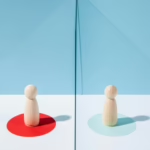UI/UX is dead. Why I hate the Term and What it Should be Called Instead

If you are in any way familiar with the tech Industry, chances are you have likely heard the term ‘UI/UX’. It’s a catch-all term that oversimplifies a very nuanced design discipline for the sake of convenience.
But What is ‘UI/UX’, Really?

The phrase refers to User Interface (UI) and User Experience (UX). Don Norman—the man who coined the term UX otherwise known as ‘User Experience’, suggests “Every aspect of the end-user’s interaction with the company, its services, and its products is included in the user experience.” As a UX designer, if I were to explain the difference between UI and UX to people who knew nothing about it, here’s how I would approach it:
UX is how a user interacts and experiences a product or service. UX design involves understanding and addressing users’ needs by creating meaningful, intuitive experiences that solve their problems. UI is an element within the broader scope of UX. It is concerned with the feel of the product, the visual elements of the interface, and the outer layer that users engage with directly—everything from color palettes, typography and buttons, shaped by the structure and insights of UX research.
Hence, UX designers wear multiple hats, one including proficiency in UI design, as they consider the user’s whole journey from the first interaction with a product to the point at which their objectives are achieved.
Why the Buzzword ‘UI/UX’ Needs a Redesign
The problem starts when these terms are used synonymously or as choices. The “or” in UI/UX forces us to choose between practicality and aesthetics, when both are important. A product with a beautiful interface is not guaranteed good usability, while an interface with good usability and poor visual design will most likely not attract users to the product. A truly great product requires a holistic approach that takes into consideration both its appearance and the overall experience of using it.
Moreover, the key difference is that unlike UI, UX is not limited to just digital experiences like apps and websites—for example, UX may also mean simplifying how you order something from a local restaurant or making light switches intuitive and easy to use. UI is more focused on the interface but is informed by accessibility guidelines and user research to make their visuals user centric.
At some point, the industry started to combine these two responsibilities as either or. I believe it’s a poor use of terminology because it implies that a designer that can create beautiful interfaces understands the psychology behind user decisions—which is not always the case. Is it possible for certain designers to create both stunning interfaces and simultaneously conduct in-depth user research and streamline complex user flows? Of course. However, this is most probably going to cause a massive burn out.
Olga Wojnarowska conducted a recent study with 40 UX specialists and found that over 90% experience regular burn out. And the cause? You guessed it.
![]()
“A lack of UX awareness in the organization”.
Similarly, Neilson & Norman’s 2008 study highlighted that designers who tackled both UI and UX tend to burn out from trying to do multiple tasks within an organization’s timelines, being discontented with one’s work, poorly designed products, and a lack of clarity with stakeholders not knowing what designers do.
Thus, understanding the exact responsibilities and skills of UX and UI designers becomes even more essential. Of course, I’d probably get the age-old question:
Isn’t UX and UI Just…Product Design?
As if things weren’t complicated enough, the term ‘Product Designer’ has been added to the mix. To make this easier, the ‘product designer’ title identifies someone who manages the overall product experience and has been used interchangeably with UX Design. However, the difference lies in the scope of work.
For instance, the materials, ergonomics and elegant hardware design of the iPhone are all the result of the work of Apple’s product design team. Functionality and aesthetics are prioritized in the design. The iPhone’s UI, which includes interactions, and icons, was designed by the UX team. They make sure that the software is user-friendly, responsive, and intuitive, which improves the user’s interaction with the gadget. The goal of both UX and product designers is to provide compelling and user-friendly design.
According to the Interaction Design Foundation, A product designer oversees the whole lifecycle of a product, from conceptualization to execution, with their responsibilities extending beyond UI and UX. They also consider the product’s technical feasibility, market viability, and business objectives. UX designers on the other hand focus on how the users directly interact with the product.
Imagine a product designer developing a new health app. They would consider not only how the app looks and how users will interact with it, but also what features are most important for their target audience, and how this app fits into the market.
CX, SD and other Acronyms

The handbook ‘This is Service Design Doing’ by Mark Stickdorn clearly makes the distinctions between the several specializations in the design industry. The authors make a compelling case for the need of dismantling organizational silos to foster co-creation given the interconnected nature of design tasks. Even while it’s true that fields like UI and UX frequently overlap, it’s essential to recognize why it can still be beneficial to maintain boundaries between them.
For one, specialists can refine their expertise in particular domains as a result to the divide, leading to more detailed and efficient design solutions. Additionally, it makes communication transparent and accountable.
Second, disciplines like Customer experience (CX) and Service Design (SD) are not to be confused with other design roles, or with each other. CX encompasses more than just a user’s interactions with the product. It involves every interaction a consumer has with the brand or company, be it via an email or a support call. These vast networks of interactions aim to forge a bond with the client. Service design on the other hand, according to Megan Erin Miller’s panel crowdsource of 150 designers—balances the needs of the customer with the needs of the business. Sounds familiar? Yes, it sounds a lot like product design.
Considering the wide range of design roles, ‘UI/UX’ posed as a convenient umbrella term (even though it is not all encompassing).
There is no denying that blending roles can provide the flexibility one needs to take on new challenges as the needs of the project goals change. For example, a clearly defined UI role in a small start-up company may not adjust quickly enough if a project starts with a concentration on UI design but later changes to require additional UX research because of new user needs or feedback. In certain situations, combining responsibilities can provide the adaptability needed to better handle changing priorities.
However, when people call themselves “UI/UX” designers, and other specializations like IXD (interaction design), VD (visual design) have also been lumped along—it becomes challenging to understand the disorganized mix of abilities one could expect from a UX Designer. It would be the same as someone asking how you travel to work, and you respond with “transportation” instead of saying you travel by car. Although it is technically correct, it is too broad to give anyone context.
By differentiating between these disciplines, design and development processes can be made more efficient through improved communication, strategic targeting and efficient resource allocation. For users and customers, this approach delivers a more seamless experience.
Before User Experience It Had a Name
UX is an old practice, but only in recent years have they labeled them in the design industry. Take Japan’s vending machines, for example—they are a staple on almost every corner and show a heavy emphasis on UX. Their machines serve everything from hot meals to cold beverages, and are made to be quick, easy, and accessible. These devices consider the entire user experience, from the speed at which the product dispensed to the ease of payment. The machine’s height, button locations, as well as the visibility of the options are considered to somewhat simplify the tasks for the person in front of it.
Another example of an early instance of user experience (UX) is Henry Ford. It transformed manufacturing by streamlining and optimizing the automobile-building process for laborers. Their methodology guaranteed smooth production flow and reduced the physical strain on them. Although they follow the same principles of usability in UX, we didn’t feel the need to name these practices until they blended with the digital world.
UX is Much More Than Just “Design”
User experience goes far beyond what a UX designer alone can achieve. While my title may be “UX Designer,” the user experience is shaped by a wide range of contributors—marketers, managers, customer support, developers, and even other users. My role is to gather insights from all these perspectives and find the most effective way to package, position, and deliver the experience. True success lies in considering every touchpoint, ensuring the user’s journey is seamless and fulfilling from start to finish.
Why Dropping the ‘UI’ From ‘UI/UX’ Makes All the Difference

I’ve personally found that adopting the ‘UX Designer’ title has helped me to communicate more effectively with clients about what I do. It’s also given me a clearer sense of purpose and direction in my work. I believe too many designers are assigned roles they aren’t experienced in—so by choosing a job title that accurately reflects your role, you’re increasing your chances of being considered for relevant positions and attracting stakeholders who appreciate your specific skills and experience.
Imagine a stakeholder is looking to hire a ‘UX/UI Designer’ (I have seen plenty of these on job listings). If the role outlines multiple responsibilities such as User Research and Visual Design skills, it may be unclear which skills are prioritized for the candidate. When a candidate with a solid background in graphic design but little expertise in user research is hired for the position, the organization may be disappointed to learn that they lack the abilities required to do certain tasks.
This may result in inconveniences, delays, or even a poor-quality deliverable. When organizations do not know the difference between UX and UI, it is difficult to determine what their company needs to make their product successful. On the other hand, a title like ‘UX Researcher’ would make it very evident that the applicant must possess user research experience, which may be very important for the project at hand.
So, What Should We Call It Instead?
If you are a designer that does everything from user research, prototyping, visual design to interaction design, I believe ‘UX Designer’ alone is sufficient. UX is already a term that is inclusive and accurately reflects the scope of work. UI is already a part of the UX process, unless one specializes in solely visual design. However, the project’s complexity, the level of knowledge needed, the size of the business, and the team members’ abilities all play a role in where we draw the lines.
The next time you hear ‘UI/UX’, consider digging a little further. Find out whether the discussion is focused more on visual design, creative expression, and aesthetic result, or if it’s related to things like user journeys, usability testing, and research. Because ultimately, what truly matters is the depth and accuracy of the practice itself, more than the labels we use to define them.

